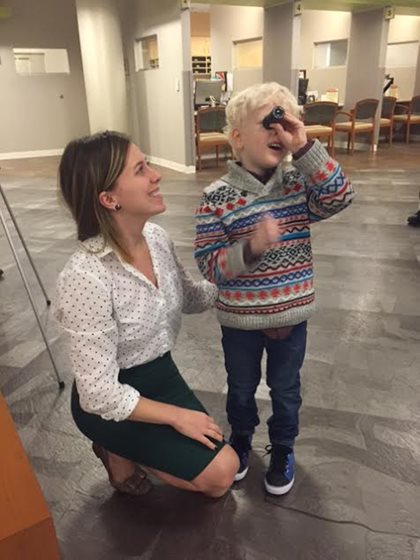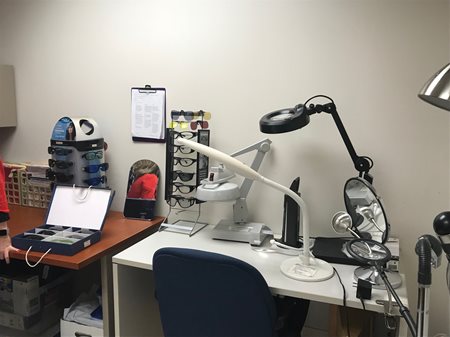Living with Low Vision

Low vision is vision loss that can't be corrected with eyeglasses, contacts, medicine or surgery. It isn't blindness as limited sight remains. It is a vision problem that makes it hard to do everyday activities. Low vision can include blind spots, poor night vision and blurry sight.
You may have low vision if you can’t see well enough to do things like:
- Read
- Drive
- Recognize people’s faces
- Watch television
- Use a computer or tablet
The type of low vision depends on the disease or condition that caused your low vision. The most common types of low vision are:
- Central vision loss (not being able to see things in the center of your vision)
- Peripheral vision loss (not being able to see things out of the corners of your eyes)
- Night blindness (not being able to see in low light)
- Blurry or hazy vision
What causes low vision?
Many different eye conditions can cause low vision, but the most common causes are:
- Age-related macular degeneration (AMD)
- Cataracts
- Diabetic retinopathy (a condition that can cause vision loss in people with diabetes)
- Glaucoma
 Low vision is more common in older adults because many of the diseases that can cause it are more common in older adults. Aging doesn’t cause low vision on its own.
Low vision is more common in older adults because many of the diseases that can cause it are more common in older adults. Aging doesn’t cause low vision on its own.
If you have low vision, you can find ways to make the most of your vision and keep doing the things you love to do. There are many ways to help so that you can continue to do things important. Losing vision does not mean giving up activities, but it may mean learning new ways to do them.
If you have experienced vision loss, there are many services and devices that can help you continue to live independently in your home and community after vision problems. Vision rehabilitation can help those with vision loss to maximize their remaining vision and in maintaining their independence and quality of life through services such as those provided at the William Feinbloom Vision Rehabilitation Center, which is housed at The Eye Institute (TEI) in the Oak Lane section of Philadelphia.
The Feinbloom Center’s interdisciplinary staff consists of low vision doctors, a rehab staff that includes a certified low vision therapist, a certified orientation and mobility specialist, an occupational therapist, as well as social workers. Feinbloom’s interdisciplinary team develops low vision strategies that help patients with visual impairment to achieve goals such as reading, identifying street signs and bus numbers, watching television, managing household and job-related tasks, and keeping up with school work.
Low vision optical devices use lenses to magnify images so objects or print appear larger to the eye. Examples include magnifying reading glasses, stand magnifiers, hand-held magnifiers, and small pocket-sized telescopes. These special optical devices are different from regular glasses and magnifiers.
Non-optical devices and modifications do not use lenses to magnify images. Instead, they increase lighting levels, improve contrast, decrease the effects of glare, or increase print size to make objects and print more easily visible. Examples include high-intensity table or floor lamps, large print reading materials, electronic video magnifiers, and electronics such as iPads and tablets. Non-optical devices can also be used in combination with magnifiers and other low-vision optical devices.

The Feinbloom Center provides various services to assist patients with visual impairments including:
- Comprehensive low vision evaluations for adults and children
- Prescription and dispensing of low vision devices and adaptive equipment
- Rehabilitative training in the use of remaining vision
- Adaptive technology evaluations
- Referrals to agencies that offer assistance in obtaining adaptive equipment and rehabilitative services
If you or someone you know lives with low vision and is in need of vision rehabilitation services, please contact TEI at 215.276.6111 to make an appointment.